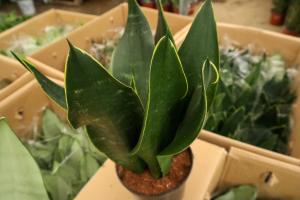Introduction
Spider plants, also known as Chlorophytum comosum, are popular houseplants because of their easy maintenance and attractive appearance. However, they can sometimes face issues that hinder their growth and health. In this article, we will discuss how to revive a spider plant that is struggling.
Diagnosing the Problem
Before attempting to revive your spider plant, it is important to determine the problem that has caused the plant to wither or die. Common problems include overwatering, underwatering, pest infestation, and improper lighting. Inspect your plant closely and check the soil, leaves, and roots for any abnormalities or signs of damage.
Reviving Overwatered Spider Plants
If your spider plant has been overwatered, it may be suffering from root rot. This occurs when the roots of the plant are constantly exposed to moisture, which causes them to rot and die. To revive an overwatered spider plant, allow the soil to dry out completely for several days. Once the soil has dried, water the plant sparingly and use a high-quality potting mix that promotes good drainage.
Reviving Underwatered Spider Plants
If your spider plant is dry and wilted, it may be suffering from dehydration. This occurs when the plant is not receiving enough water to sustain its growth and health. To revive an underwatered spider plant, water the soil thoroughly and ensure that the soil stays moist, but not waterlogged. Consider using a humidity tray or a pebble tray to increase moisture levels around the plant.
Dealing with Pest Infestation
Spider plants are susceptible to pest infestations, such as spider mites and aphids. These pests can cause significant damage to the plant, resulting in stunted growth, yellowing leaves, and even death. To deal with a pest infestation, isolate the affected plant and treat it with insecticidal soap or neem oil. Be sure to follow the instructions carefully and avoid using harsh chemicals that can harm the plant.
Providing Proper Lighting
Spider plants require moderate to bright indirect sunlight to thrive. If your plant is not receiving enough light, it may become weak and spindly, or become pale in color. To provide proper lighting, place the plant near a window facing east, west, or north. If you live in a region with harsh sunlight, consider using a sheer curtain to filter the light.
Maintaining Healthy Spider Plants
In addition to reviving a struggling spider plant, it is important to maintain its health regularly. This can include providing proper watering, fertilizing, and pruning. Use a well-balanced fertilizer every two to three months and trim any dead or yellowing leaves to encourage new growth.
Conclusion
Spider plants are easy to care for and can bring a touch of green to any room. If your plant is struggling, take the time to diagnose the problem and provide proper care. With the right amount of attention and care, your spider plant will thrive and become a beautiful addition to your home.

 how many times do yo...
how many times do yo... how many planted tre...
how many planted tre... how many pine trees ...
how many pine trees ... how many pecan trees...
how many pecan trees... how many plants comp...
how many plants comp... how many plants can ...
how many plants can ... how many plants and ...
how many plants and ... how many pepper plan...
how many pepper plan...






























